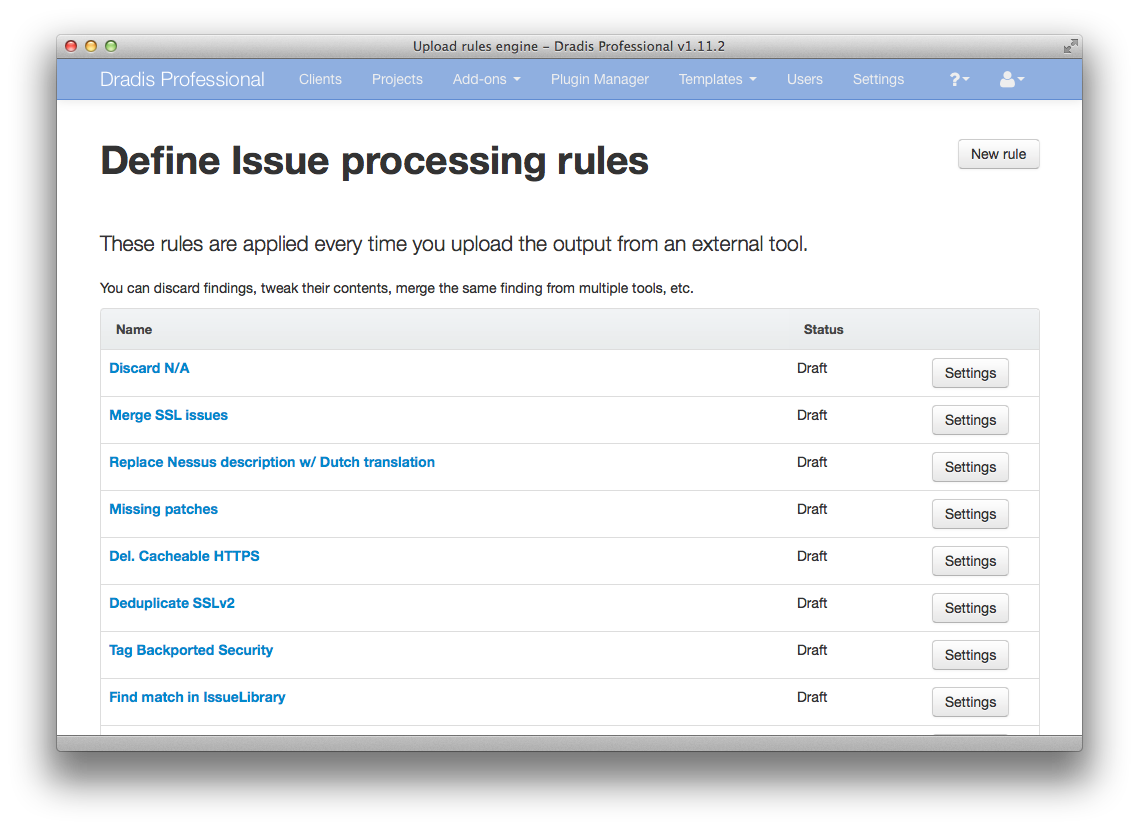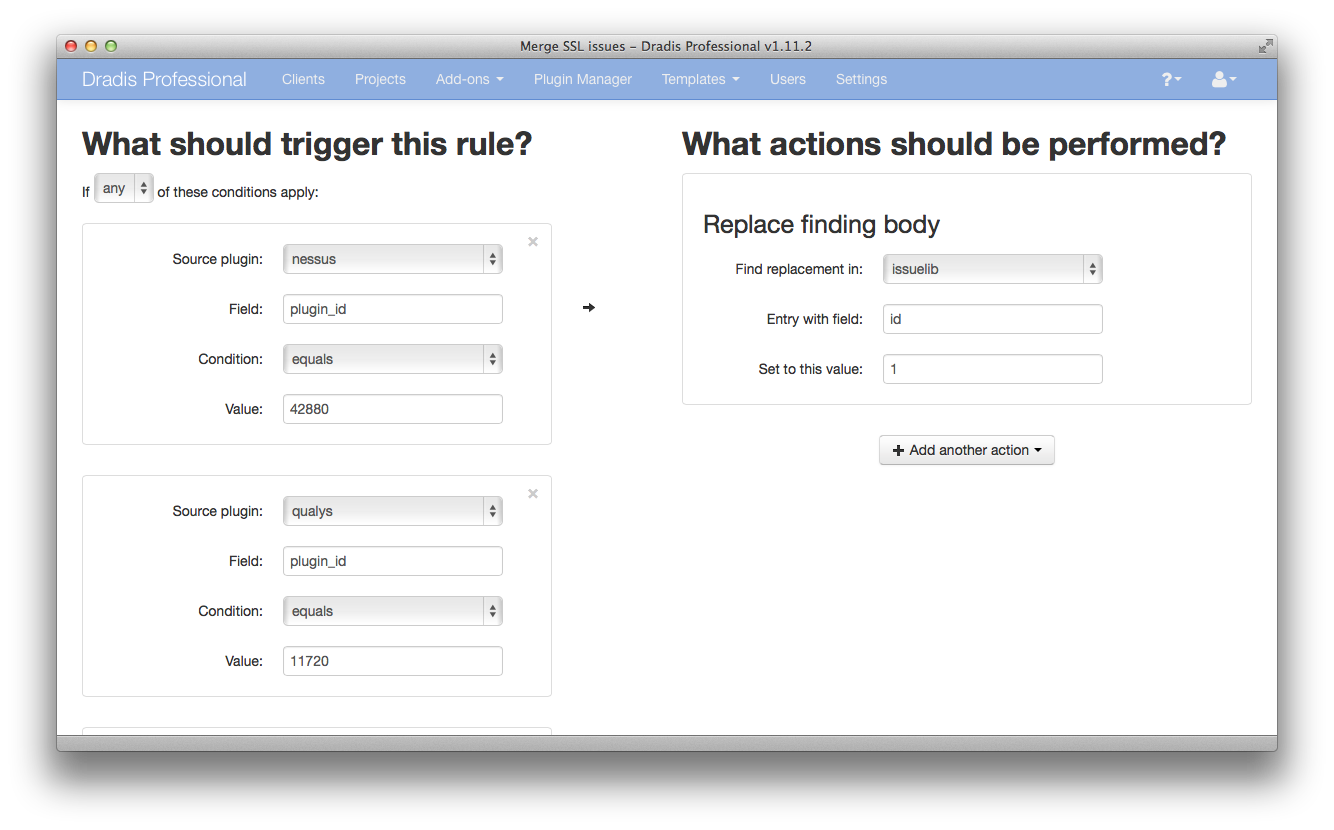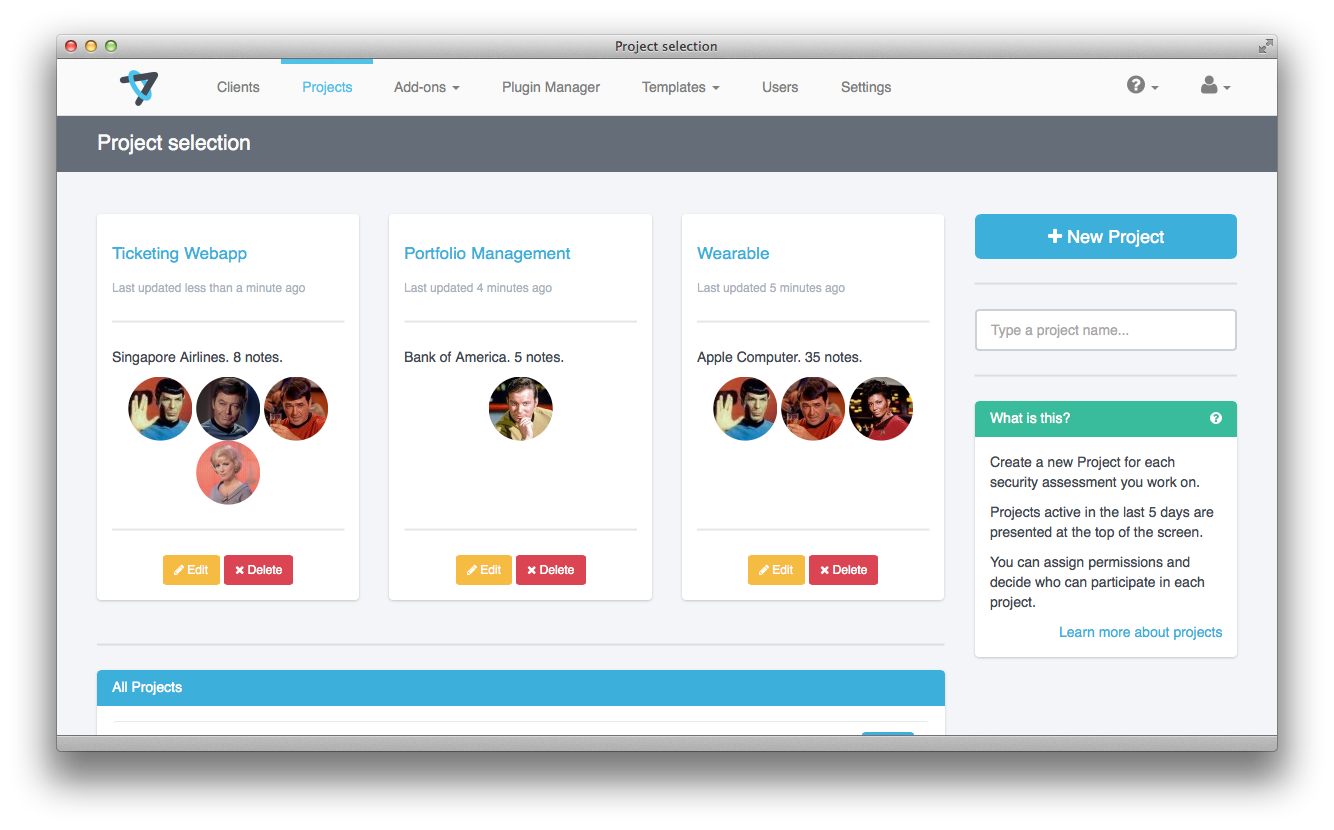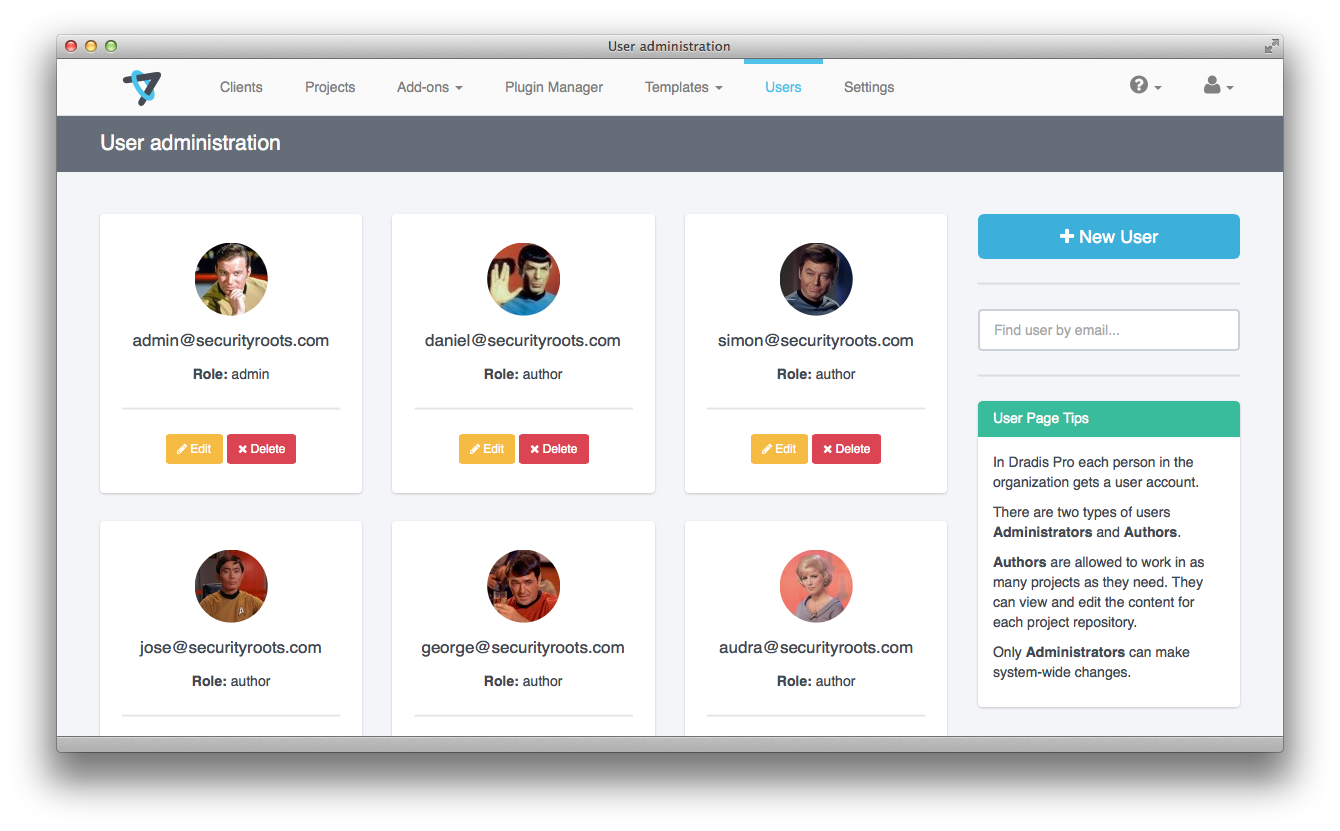Today we’re happy to announce a new release of Dradis Professional Edition: Dradis Pro v1.12. Dradis is a collaboration and automated reporting tool for information security teams.
The highlights:
- New Accunetix and NTOSpider connectors
- Updated Burp and OpenVAS connectors
- Business Intelligence add-on (see below)
- Rules Engine add-on (see below)
- Reporting engine enhancements:
- Pre-export validator
- Native support for .docx and .docm
- IssueCounter control
- Concurrency enhancements
- Bugs fixed and feature requests: #128, #131, #141, #145, #152, #184, #189, #197, #201, #205, #207, #212, #216, #232, #238, #239, #254
Rules Engine add-on
Define rules that kick in when you upload the output of a scanner. Akin to your email client processing rules, the Rules Engine allows you, among other actions, to:
- Tag findings based on their fields (e.g. tag as Critical if CVSSv2 is > 9)
- Merge several findings into a single one (e.g. group all those pesky “missing patches” entries under a single finding)
- Replace the default description with your own. That’s right, every time Burp finds XSS, you will get a finding with your team’s custom Description / Recommendation for this vulnerability class.
Business Intelligence add-on
Most likely you’re running 100s of projects each year. The Business Intelligence add-on helps you make sense of the wealth of information that is at your fingertips but that most likely you haven’t been tracking. These are some of the questions you will be able to start answering:
- What do you know about the types of projects you’re running (what percentage is webapps vs infrastructure)?
- What types of clients are you serving? In what industry?
- How are the most profitable client types?
- What percentage of your projects is under-scoped or over-scoped?
- …
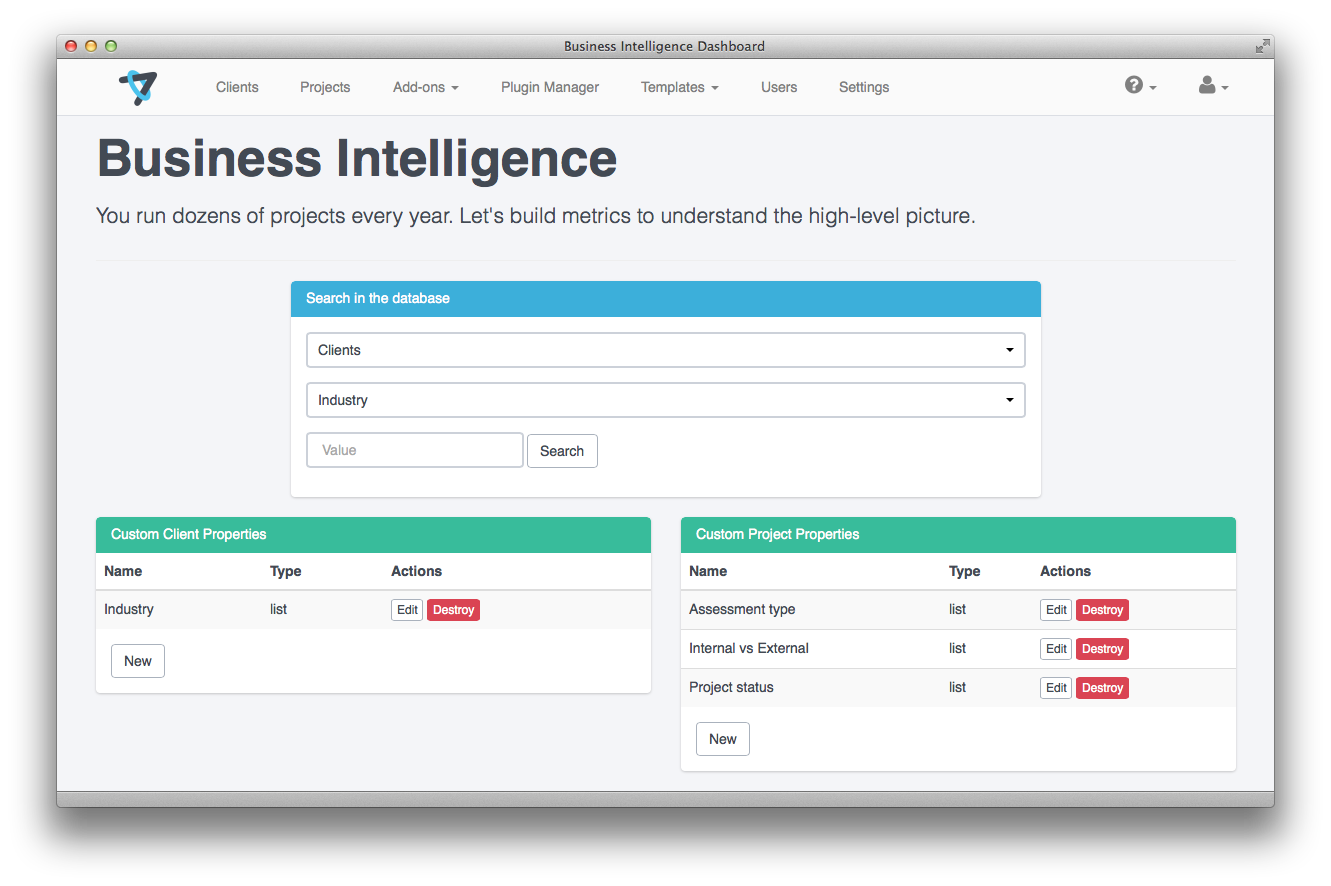
The Business Intelligence dashboard. Define custom properties for Clients and Projects to track business metrics.
New admin layout
Yes, we finally have a layout like it’s 2015 (well maybe 2013), but a great improvement over our bare-bones previous one. Here are just a couple of quick examples:
How to upgrade to Dradis Pro v1.12?
Just head over to the release page and follow the instructions:
https://portal.securityroots.com/releases/1.12.0
Still not a Dradis user?
These are some of the benefits you’re missing out:
- Automated reports, generate the same reports your clients know and love in a fraction of the time.
- Combine the output from different tools into a single report.
- Deliver consistent results. Never forget any steps. Always know what has been covered and what is still ahead.
- Everyone on the same page: all information available across the team.
- Dradis Professional is reliable, up-to-date and with comes with quality support
Read more about Dradis Pro’s time-saving features. Or if you want to start from the beginning, read the the 1-page summary.

